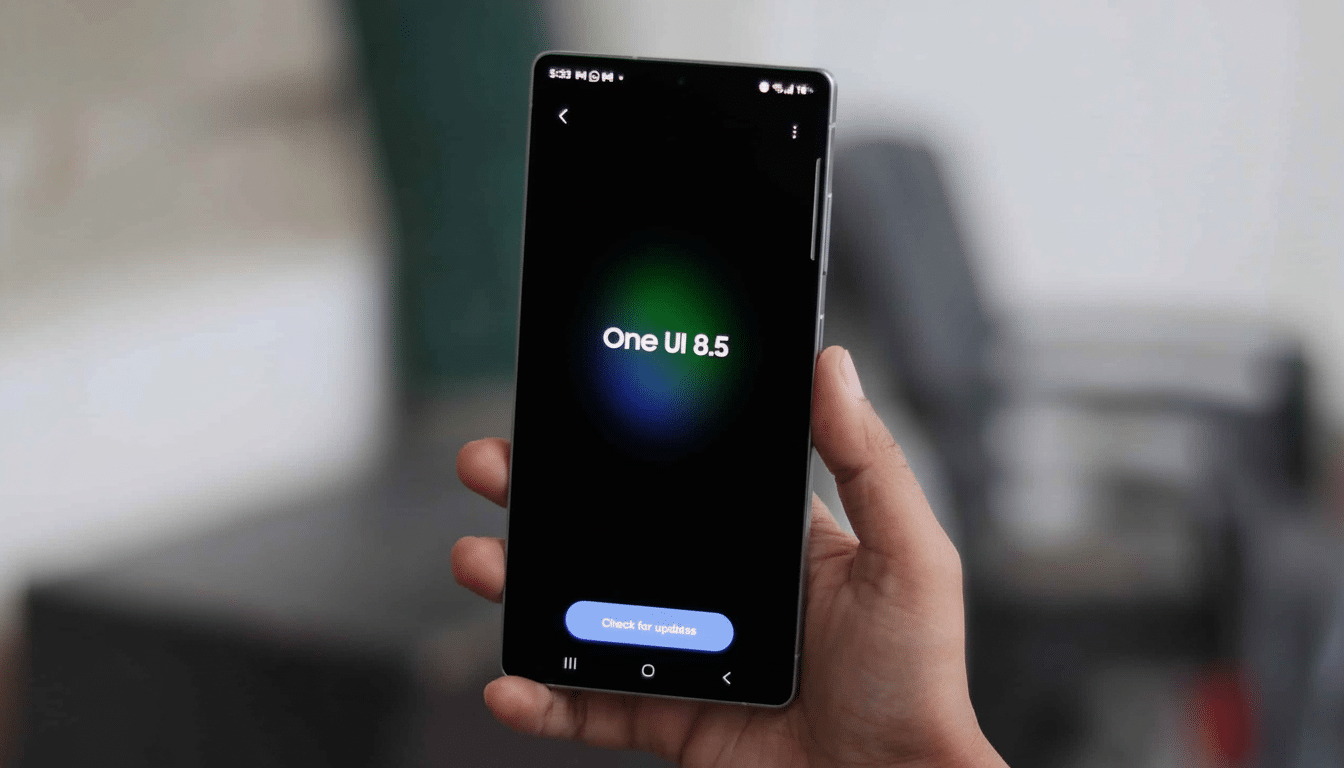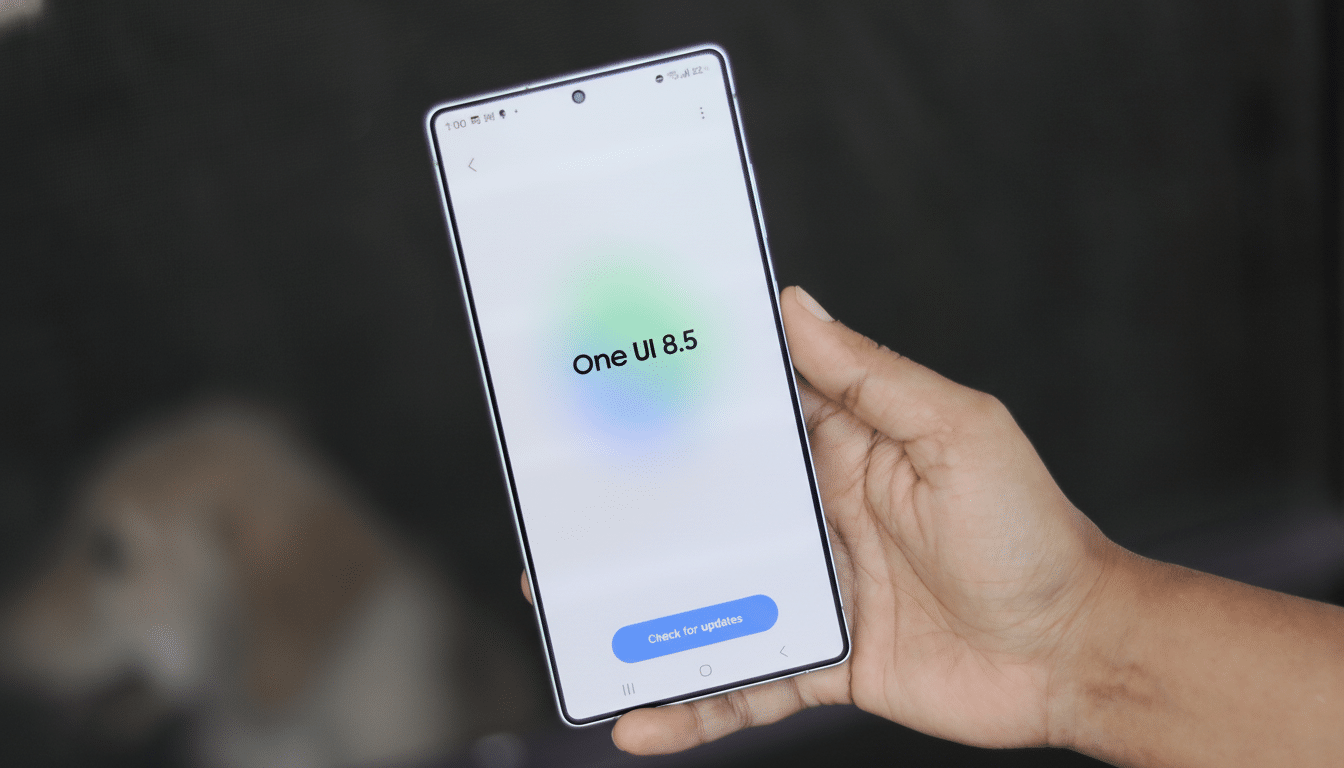If One UI 8 seemed more like a consistent tune-up than an actual remix, Samsung’s next number is shaping up to be the gee-whiz showstopper. Word on the street is a One UI 8.5 beta is hovering around, but an even bigger update is in the works to launch alongside Samsung’s next Galaxy S flagships. Look for a more consistent visual identity, expanded Android platform features, and new privacy tools positioned apart from what shipped with the One UI 8 build.
What One UI 8.5 Will Offer in Features and Design
The most visible modification is an expressive interface. Leaks indicate a revised home screen look that boasts richer depth, playful 3D-style icons, and snazzier system animations that make navigation feel more responsive, not just speedy. It sounds like Samsung’s lock screen and Always On Display could get smarter customization, with more cohesive widgets, glanceable info, and ambient battery usage.

- Under the hood, One UI 8.5 is likely to be built atop Android 16 QPR2.
This is significant because, historically, QPR builds contain stability and framework-level features without waiting for a full-point release to deliver them. It paves the way for more sophisticated handling of background processes, improved behavior of notifications, and stronger controls over permissions — three areas where Google has been clamping down on misbehaving apps.
Samsung’s commitment to the privacy theme is apparent as well in an anti-shoulder-surfing feature that tamps down viewing angles slightly when you’re, say, on a crowded bus.
Early talk says the feature could depend on custom-built display hardware, so it might launch in a high-end model before moving down. Look for Knox to be more pervasive across the stack, with unambiguous toggles for on-device processing and an easier method to audit what data apps can see.
On the usability front, multitasking on larger screens is still a priority. Samsung has been chipping away at pop‑over windows, split‑screen pairing, and task continuity on foldables; One UI 8.5 is widely expected to grease the wheels for app resizing and state retention so your layouts hang around more reliably. Camera and gallery adjustments are also on the cards, with smarter scene detection, quicker post‑processing, and more granular editing tools that hook into Samsung’s AI capabilities without coming across as bolted-on.
Beta Rollout and Eligible Galaxy Devices and Regions
Industry watchers expect the One UI 8.5 beta to be available first for Galaxy S followers, something that would fall in line with Samsung’s typical playbook.
These eyes-on-the-prize Windows Insider peeps get to begin fiddling with stuff during that early access period that usually encompasses only a few key markets initially, but with more countries joining the party as builds stabilize.

In past cycles, the program stretched over a number of weeks and churned along quickly, frequently issuing weekly or biweekly patches as feedback comes in.
Recent S‑series flagships, foldables, and some top‑to‑midrange models usually slot in here. Devices pledged longer support for software should be doing well: Samsung now promises up to seven years of OS and security updates on its newest top-tier phones, which means they’ll always be at the front of the queue when significant builds creak into view. Carrier bloat can still cause a delay, but Samsung has improved significantly since the One UI 6 days.
A Changed Rhythm in Samsung’s Software Strategy
One UI 8 came quicker than some observers anticipated, as a way of resetting rhythm after the long-drawn One UI 7 launch and to harmonize with updates made to Google’s Android beta schedule. That made 8 feel a little incremental at times: steady, but cautious. Instead, 8.5 is being positioned as the “big” release in this cycle, boosting comparisons between how Samsung has sometimes used a mid-cycle update to dollop on the splashy paint previously reserved for full-version bumps.
That shifted schedule also is indicative of how Samsung now releases software along with hardware storylines. S‑series phones spotlight systemwide visual refreshes and camera intelligence, while foldables favor multitasking and continuity. It’s a bit of an 8.5 because it enables the next wave of S devices — they’re just awesome — to come out with a platform that feels pretty fresh without having to wait for the next generation of Android.
What This Means for Users and Enterprise IT Teams
For ordinary users, the appeal goes like this: a fresher look, cool new features (such as privacy guards and more reliable multitasking), and smoother animations. For companies, predictability is even more important. A controlled beta window, a well-defined set of features, and deep integration with Android’s security model reduce the likelihood of app breakage and reduce validation time. And Samsung’s enterprise solutions — Knox Suite, granular device controls, and zero‑touch enrollment — directly profit from these platform improvements.
The stakes are high. The latest shipment data from IDC keeps Samsung near or at the top, globally, with about 20 percent of the market. And on that scale, it doesn’t take much in the way of UX change to resonate across hundreds of millions of devices and change how Android feels at a large level, day to day. If One UI 8.5 brings with it the aforementioned visual refresh and privacy upgrades, all while retaining a performance profile in line with or surpassing what Samsung did with 8, it has the potential to be an update that makes your late-model Galaxy feel new again — even though you’re not replacing any of its hardware.
Watch the beta sign‑up pages and official community streams. If Samsung sticks to its current patterns, early adopters will get a significant lead in investigating One UI 8.5’s fresher look and features before the stable build lands alongside the next Galaxy S series launch.

